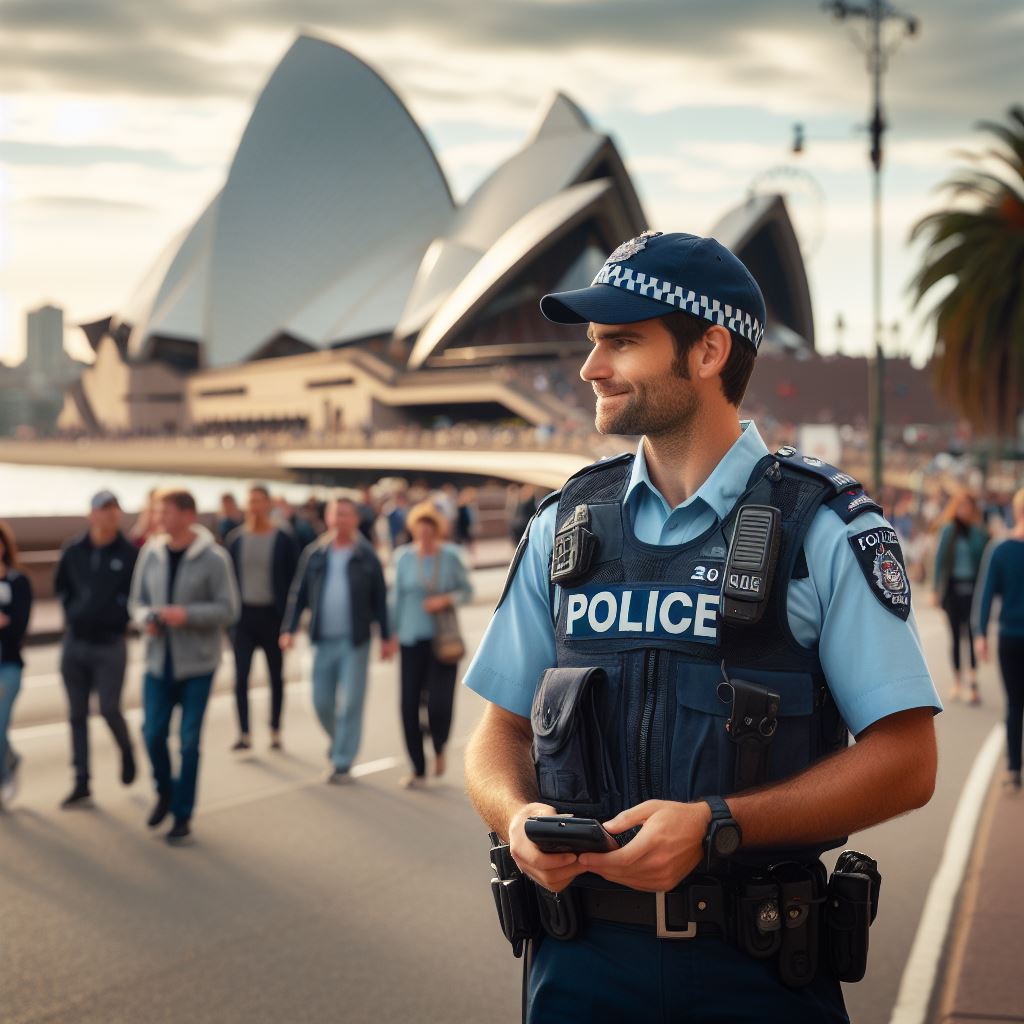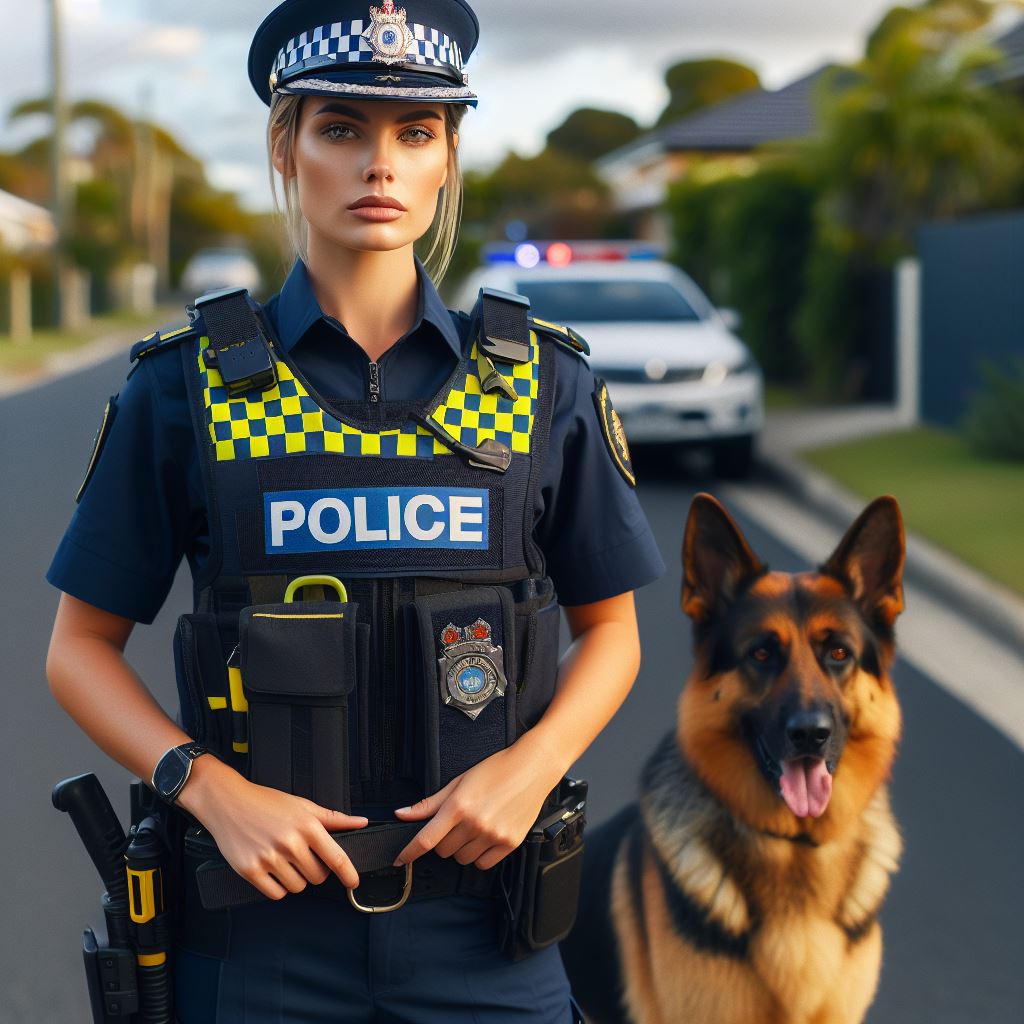Introduction
In the complex landscape of law enforcement, the handling of critical incidents stands as a linchpin to maintaining public safety and ensuring swift, decisive action in the face of unforeseen challenges.
This blog post delves into the dynamic realm of how police, as front-line responders, actively navigate and manage critical incidents.
Critical incidents demand a unique set of skills, strategies, and a rapid response from law enforcement agencies.
From hostage situations and active shooter scenarios to natural disasters, the ability of police to adeptly handle these situations is paramount to preserving lives and safeguarding communities.
This exploration aims to shine a spotlight on the proactive measures and operational tactics employed by police forces when faced with critical incidents.
The significance of effective handling and management of critical incidents cannot be overstated.
Lives often hang in the balance, and the outcomes of these high-stakes situations reverberate throughout communities.
The ability of police to swiftly assess, strategize, and execute a response plan not only minimizes potential harm but also ensures the restoration of order and security.
In essence, the effective management of critical incidents is not just a function of law enforcement; it is a cornerstone in fostering public trust, safety, and resilience.
Join us in this exploration of the active, strategic responses employed by police in the face of critical incidents.
By understanding the complexities and nuances of their approach, we gain insights into the critical role law enforcement plays in maintaining societal well-being during unforeseen and challenging circumstances.
Definition of Critical Incidents
Critical incidents can be defined as situations that pose a significant threat to public safety, resulting in serious harm or potential loss of life. These incidents require an immediate response from law enforcement to mitigate the danger and restore order.
Qualifying Factors for Critical Incidents
To qualify as a critical incident, an event must meet certain criteria. It must involve substantial risk to public safety, such as active shooter situations, terrorist attacks, hostage takings, or large-scale natural disasters.
These events demand urgent and strategic intervention by the police.
Types of Critical Incidents
Active Shooter Incidents
These incidents involve individuals actively engaged in killing or attempting to kill people in a confined or populated area. Police respond with rapid deployment tactics to neutralize the threat and protect civilians.
Terrorist Attacks
Terrorism aims to create fear and panic through violent acts targeted at innocent civilians. Police work closely with intelligence agencies to prevent attacks, but when they occur, law enforcement mobilizes tactical units to neutralize terrorists and secure the area.
Hostage Situations
These incidents involve individuals holding others against their will, often demanding ransom or expressing political motives. Police negotiators engage in dialogue to peacefully resolve the situation while maintaining the safety of hostages.
Major Traffic Accidents
Crashes involving multiple vehicles or high casualty rates qualify as critical incidents. Police coordinate rescue efforts, secure the scene, and investigate the cause to prevent future accidents.
Large-Scale Natural Disasters
Incidents like hurricanes, earthquakes, or floods require a coordinated response from various agencies, including the police. Law enforcement assists in evacuations, maintains public order, and provides aid to affected individuals.
Riots and Civil Unrest
In situations where public gatherings turn violent, police must use crowd control techniques to protect lives, preserve public property, and restore peace. Communication and de-escalation tactics are crucial in such incidents.
Incidents Involving Hazardous Materials
Accidents or intentional releases of hazardous substances pose a severe threat to public safety. The police coordinate with specialized units to contain the situation, evacuate affected areas, and minimize harm.
Escaped Convicts and Fugitive Manhunts
Instances where dangerous criminals escape custody or when fugitives pose a significant risk to the community require swift action by law enforcement. Police use various resources like K-9 units, air support, and tactical teams to apprehend suspects.
Domestic Violence or Stalking Incidents
High-risk incidents involving intimate partner violence or persistent stalking demand immediate intervention to protect victims. Police employ preventative measures, secure evidence, and provide victim support services.
Mass Casualty Incidents
Any incident resulting in a significant number of injuries or fatalities falls into this category. Police work with other emergency responders to triage, transport, and treat the wounded while conducting investigations to establish the cause.
Handling these critical incidents requires a combination of specialized training, resources, and coordination between law enforcement agencies, emergency services, and other relevant stakeholders.
The police must employ effective incident command structures, maintain clear communication channels, and adapt their response strategies based on the evolving situation.
In essence, critical incidents encompass a wide range of high-risk situations that pose a threat to public safety.
Police play a crucial role in managing these incidents by swiftly responding, neutralizing threats, and protecting the well-being of individuals affected by such incidents.
Their preparedness, expertise, and ability to collaborate with other agencies are paramount in ensuring a successful resolution to critical incidents.
Your Personalized Career Strategy
Unlock your potential with tailored career consulting. Get clear, actionable steps designed for your success. Start now!
Get StartedRead: How to Become a Police Officer in Australia
The role of police in critical incidents
In this section, we will explore the role of police in critical incidents and discuss their primary responsibilities. We will also delve into the importance of maintaining public safety and ensuring law enforcement.
Primary Responsibilities of the Police during Critical Incidents
- Responding promptly and efficiently to emergency calls and critical incidents.
- Assessing the situation and gathering relevant information to determine the appropriate action.
- Securing the affected area to prevent further harm and potential escalation.
- Providing immediate medical assistance to the injured and facilitating their transfer to medical facilities.
- Ensuring the safety and wellbeing of bystanders and witnesses by providing necessary support.
- Identifying and apprehending the individuals responsible for the incident to hold them accountable.
The police play a crucial role in critical incidents by swiftly taking control of the situation, maintaining order, and minimizing potential risks.
Maintaining Public Safety and Ensuring Law Enforcement
- Public Safety: During critical incidents, police are responsible for safeguarding the general public, ensuring their security, and protecting their rights.
- Crowd Control: The police are tasked with managing crowd behavior to prevent chaos or potential harm to individuals or property.
- Traffic Control: Police officers regulate traffic during critical incidents to facilitate the smooth flow of emergency vehicles and prevent road congestion.
- Evidence Preservation: Police must preserve the crime scene and collect evidence meticulously to support investigations and potential legal proceedings.
- Coordinating with Other Agencies: The police collaborate with other agencies such as fire departments and medical services to ensure a coordinated response during critical incidents.
- Providing Reassurance: Police efforts to maintain public safety and swiftly respond to critical incidents help instill a sense of reassurance and confidence in the community.
By prioritizing the safety of the public and diligently enforcing the law, the police play a critical role in the aftermath of critical incidents.
In fact, the police have several primary responsibilities during critical incidents, including prompt response, assessment, securing the affected area, providing medical assistance, prioritizing public safety, and apprehending responsible individuals.
They also ensure law enforcement by managing crowd behavior, regulating traffic, preserving evidence, and coordinating with other agencies.
The police’s crucial role in handling critical incidents helps maintain public safety and enforce the law, thereby reassuring the community in times of crisis.
Read: Understanding Ranks in Australian Police Force
Preparation and Planning
Thorough preparation and planning are crucial when it comes to handling critical incidents. These events require a high level of expertise, coordination, and strategy to ensure the safety of both the public and law enforcement personnel.
The Significance of Thorough Preparation
Proper preparation allows the police to anticipate potential risks and develop appropriate responses. By thoroughly analyzing the situation, law enforcement agencies can effectively allocate resources and personnel, ensuring a swift and effective response.
- Researching and gathering intelligence: Law enforcement authorities conduct extensive research and gather intelligence to understand the nature of the incident, the individuals involved, and any potential threats or risks.
- Training and skill development: Specialized units undergo rigorous training and skill development to enhance their capabilities in critical situations, including hostage crises, terrorist attacks, or active shooter incidents.
- Creating response protocols: Through extensive preparation, the police develop response protocols that outline the roles and responsibilities of each unit involved, ensuring a well-coordinated and cohesive response.
- Evaluating existing resources: Preparation allows the police to evaluate their existing resources, such as equipment, technology, and communication systems, to identify any gaps or limitations that may need to be addressed.
The Role of Specialized Units and Strategies
Law enforcement agencies often deploy specialized units and employ specific strategies tailored to the unique challenges posed by critical incidents. These units and strategies play a crucial role in managing and resolving such situations.
- Special Weapons and Tactics (SWAT) teams: SWAT teams are highly trained units equipped to handle high-risk incidents, including hostage crises, armed confrontations, or barricaded suspects. They employ specialized weaponry, tactical skills, and negotiation techniques.
- Crisis negotiators: Trained negotiators establish communication with suspects, aiming to peacefully resolve the situation. Their expertise lies in de-escalating tensions, building rapport, and facilitating negotiations to achieve a safe resolution.
- Incident command system: An incident command system is established to streamline communication, coordination, and decision-making at a central point. This ensures effective management of resources and provides a clear chain of command.
- Intelligence-driven strategies: Law enforcement agencies employ intelligence-driven strategies to gather real-time information, assess potential threats, and proactively respond to critical incidents. These strategies help prevent and mitigate risks.
In general, thorough preparation and planning are vital for law enforcement agencies when it comes to handling critical incidents.
The significance of preparation lies in the ability to anticipate risks, allocate resources effectively, and develop response protocols.
Additionally, specialized units and strategies play a crucial role in managing and resolving critical incidents.
By employing these measures, law enforcement agencies aim to protect the public and ensure the safety of all involved parties.
Read: Future of Diplomacy: Australia’s Role

First Response Protocols: How Police Handle Critical Incidents
When the police arrive at the scene of a critical incident, there are specific initial steps they must take to effectively manage the situation and ensure public safety.
Upon arrival, police officers begin by assessing the situation, evaluating the potential risks and threats present.
It is essential to gather as much information as possible about the incident, including the type of incident, individuals involved, and any possible hostages or victims.
Understanding the layout of the location and potential escape routes allows officers to develop a strategic plan.
Assessing the Situation
- Police officers must quickly evaluate the overall situation and identify any potential dangers.
- Gathering information about the incident is crucial, including the type of incident and people involved.
- Assessing the immediate threat level helps determine the appropriate response and required resources.
- Identifying any potential hostages, victims, or suspects is vital for swift action.
- Understanding the location’s layout and potential escape routes aids in developing a strategy.
After assessing the situation, the police must establish control over the scene.
This entails taking command of the incident, designating roles and responsibilities to officers, and ensuring effective communication.
By setting up physical barriers and cordoning off the area, unauthorized access is prevented, thus safeguarding those involved and nearby bystanders.
Maintaining open lines of communication ensures the safety of everyone and facilitates the coordination of efforts among responding officers and collaborating agencies.
In critical incidents, the initial response by the police is crucial for managing the situation effectively.
Assessing the situation enables officers to determine the appropriate response level and allocate necessary resources.
Without a thorough understanding of the incident and potential risks, the police may face challenges in resolving the situation swiftly.
Stand Out with a Resume That Gets Results
Your career is worth more than a generic template. Let us craft a resume and cover letter that showcase your unique strengths and help you secure that dream job.
Get HiredEstablishing Control
- Securing the scene and establishing control is a top priority to protect those involved and bystanders.
- Taking command of the situation includes designating specific roles and responsibilities to police personnel.
- Setting up physical barriers and cordoning off the area prevents unauthorized access.
- Ensuring the safety of everyone involved requires maintaining open lines of communication.
- Efficient coordination among responding officers and agencies enhances incident management.
Establishing control is equally critical as it provides the foundation for a coordinated response.
Taking command of the incident and assigning specific roles ensures that officers work together efficiently and effectively.
This structured approach enhances incident management and minimizes the risk of errors or miscommunication.
In summary, the initial steps taken by the police upon arrival at a critical incident scene involve assessing the situation and establishing control.
By evaluating the risks and gathering information, officers can develop a strategic plan.
Creating a secure environment and enabling effective communication among all parties involved are vital components of the police’s first response protocols.
Through these measures, police officers can effectively handle critical incidents and maintain public safety.
Read: Technology’s Impact on Diplomacy
Communication and coordination
Communication and coordination are essential during critical incidents for effective police handling.
Effective communication among police personnel is crucial during critical incidents. It ensures a smooth flow of information, allowing for quick decision-making and appropriate deployment of resources.
During critical incidents, proper coordination efforts between different departments and agencies involved are crucial. This includes collaboration with emergency services, medical personnel, and other law enforcement agencies.
Benefits of effective communication among police personnel during critical incidents
- Rapid dissemination of information: Effective communication enables the quick exchange of vital information among police personnel. This helps in identifying potential threats, gathering intelligence, and formulating strategies for a prompt response.
- Enhanced situational awareness: Clear and concise communication allows police personnel to have a clear understanding of the situation at hand. This enables them to make informed decisions and take appropriate action accordingly.
- Coordinated response: Effective communication fosters coordination among police personnel, ensuring a synchronized response to critical incidents. It helps in avoiding confusion, duplication of effort, and possible mishaps.
- Resource optimization: By communicating effectively, police personnel can allocate resources efficiently. This includes the deployment of personnel, equipment, and vehicles to the areas that require immediate attention.
- Public safety: Effective communication ensures the safety of the public during critical incidents. By keeping the public informed about the situation and providing instructions, panic and chaos can be minimized.
Coordination efforts between different departments and agencies involved
- Interagency collaboration: Critical incidents often require the involvement of various agencies, such as fire departments, medical emergency services, and specialized law enforcement units. Effective coordination ensures seamless cooperation and joint efforts.
- Unified command structure: Establishing a unified command structure helps in coordinating the response efforts. This ensures that all agencies involved follow a structured approach, eliminating conflicts and ensuring a cohesive response.
- Regular communication and briefings: Constant communication and regular briefings among different departments and agencies involved help in sharing updates, assessing the situation, and coordinating their actions accordingly.
- Joint training and exercises: Conducting joint training sessions and exercises prepares different departments and agencies to work together during critical incidents. This enhances coordination and familiarizes personnel with each other’s roles and responsibilities.
- Information sharing platforms: Using technology-driven platforms and systems for information sharing enhances coordination efforts. This includes real-time communication systems, shared databases, and video conferencing capabilities.
In review, effective communication and coordination are paramount for police handling of critical incidents.
Clear and concise communication among police personnel ensures rapid dissemination of information, enhanced situational awareness, and a coordinated response.
Additionally, coordination efforts between different departments and agencies involved are crucial to ensure seamless cooperation and joint efforts.
These efforts include interagency collaboration, unified command structures, regular communication and briefings, joint training, and information sharing platforms.
By prioritizing effective communication and coordination, police personnel can effectively mitigate critical incidents and ensure public safety.
Managing the incident
- The police employ various strategies and tactics to effectively handle critical incidents.
- They utilize negotiation techniques to peacefully resolve tense situations and prevent violence.
- De-escalation techniques are employed to reduce the intensity of the situation and promote cooperation.
- Specialized units, such as SWAT teams, are assembled to handle high-risk situations that require precision and expertise.
- Police officers establish a command post to coordinate and manage resources during critical incidents.
- They gather accurate and timely information to understand the situation and make informed decisions.
- Law enforcement officers establish a perimeter around the incident scene to ensure public safety and control access.
- They create a communication plan to ensure effective information flow among personnel involved in managing the incident.
- Police officers use crowd control techniques to manage large gatherings that may result from critical incidents.
- They assess the threat level and prioritize the safety of civilians and themselves during critical incidents.
Use of negotiation, de-escalation techniques, and specialized units
- Negotiation is a crucial tactic used by the police to resolve critical incidents peacefully.
- Officers trained in negotiation skills engage with individuals involved in the incident to find common ground.
- By understanding the concerns and motivations of those involved, negotiators work towards a peaceful resolution.
- De-escalation techniques aim to minimize conflict by reducing tension and aggression in critical incidents.
- Police officers utilize effective communication, active listening, and empathy to de-escalate the situation.
- Specialized units, such as hostage negotiation teams, are trained to handle specific critical incidents.
- These teams possess unique expertise in resolving high-stakes situations with the utmost precision.
- Specialized units receive intensive training and equipment to respond effectively in crisis scenarios.
- They are often equipped with tools like armored vehicles, specialized weapons, and advanced communication systems.
- Collaboration between negotiation teams, de-escalation experts, and specialized units enhances law enforcement’s response.
In a nutshell, police adopt different strategies and tactics to manage critical incidents effectively.
By employing negotiation, de-escalation techniques, and utilizing specialized units, law enforcement aims to resolve incidents peacefully while prioritizing public safety.
Support and assistance
In managing critical incidents, active collaboration with various emergency services and agencies is paramount for swift and effective response.
The integration of multiple entities ensures a comprehensive and coordinated approach, optimizing resources and expertise.
Firefighters, law enforcement, and medical personnel, each playing a crucial role, collaborate seamlessly to address diverse challenges in real-time, emphasizing the significance of a united front in crisis management.
Role of mental health professionals and victim support services
Equally pivotal in these scenarios is the involvement of mental health professionals and victim support services.
The aftermath of critical incidents often leaves indelible psychological imprints on both responders and victims.
Mental health professionals, armed with expertise in trauma and crisis intervention, play a proactive role in mitigating the emotional toll.
Their active engagement contributes to the overall well-being of those involved, fostering resilience and recovery.
Victim support services further amplify the network of assistance by providing immediate and long-term aid to those affected.
Offering a compassionate and empathetic approach, these services extend beyond the immediate aftermath, addressing the evolving needs of individuals as they navigate the complexities of recovery.
Active involvement from the outset ensures a holistic support system that not only aids in physical recuperation but also addresses the emotional and psychological dimensions of the crisis.
In essence, the collaboration and active participation of various emergency services, mental health professionals, and victim support services create a robust framework for addressing critical incidents comprehensively.
Through this collective effort, communities can navigate the challenges of crisis response and recovery, fostering resilience and reinforcing the importance of a united and proactive approach in the face of adversity.
Conclusion
In summary, this blog post discussed how police handle critical incidents by utilizing active strategies and effective communication.
We emphasized the significance of the police’s role in efficiently handling and managing critical incidents, as their actions can significantly impact the outcome of these situations.
It is crucial to support law enforcement efforts in critical situations as their expertise and quick response can save lives and maintain public safety.
By recapitulating the main points, we have highlighted the importance of active involvement and effective decision-making in critical incidents.
Therefore, it is crucial for society to recognize the challenges faced by police officers and show support for their efforts in such demanding situations.
Transform Your LinkedIn for Maximum Impact
Elevate your professional brand with a LinkedIn profile that attracts recruiters, showcases your expertise, and maximizes opportunities. Stand out in your industry with a profile built for success.
Boost ProfileIn closing, let us work collectively to ensure that our law enforcement agencies receive the necessary resources and training to handle critical incidents efficiently and effectively.
Together, we can make a difference and ensure the safety and well-being of our communities in critical situations.
Join us in supporting law enforcement efforts and contributing to a safer society for everyone.




